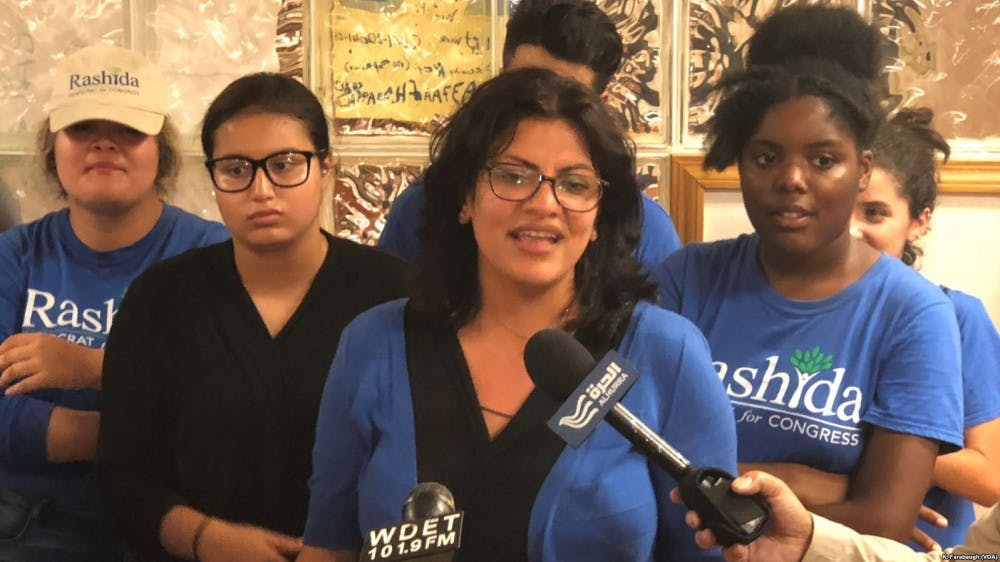This past February, it seemed like every day some new story of racism appeared in my news feed. Blackface controversies spread from the leadership of Virginia’s state government to the fashion industry. At the same time, oversight of persistent racial discrimination in favor of feel-good stories about a post-racial society influenced both Howard Schultz’s claim “I don’t see color” and the triumph of “Green Book” at the Academy Awards. And that’s just to name a few incidents.
All throughout this Black History Month, we watched person after person, brand after brand, politician after politician, translate ignorance into offensive actions, then drag us into litigation of their inner heart — their true character. If we take one thing from this disaster of a Black History Month, it should be a deeper understanding of racism and a stronger commitment to pointing it out, regardless of the inanity of the reaction. Last month was a mess, but we can learn from it and work towards a better future.
Just as February came to a close, another debate about the meaning of racism flared up, this time in Congress during Michael Cohen’s testimony to the House Committee on Oversight and Reform. The episode serves as a microcosm of what went wrong last month, and what lessons we can take from it.
After Cohen called President Trump “a racist,” Rep. Mark Meadows (R-N.C.), chairman of the conservative Freedom Caucus, called Lynne Patton, a black woman who is an official in the Department of Housing and Urban Development, into the chamber. He then said that she had told him that “there is no way that she would work for an individual who was racist.”
Rep. Rashida Tlaib (D-Mich.) called out Meadows for using Patton “as a prop” to prove the President wasn’t racist, calling the stunt “racist in itself.” Meadows responded with a particularly problematic meltdown, invoking his friendship with Oversight Chairman Elijah E. Cummings (D-Md.), who is black, and his niece and nephew of color, to prove he isn’t racist. In fact, he said Tlaib’s comments were racist. Three videos then surfaced of Meadows fanning the flames of birtherism. In one, for example, he said, “2012 is the time we are going to send Mr. Obama home to Kenya or wherever it is.” When asked about the videos, Meadows asserted that he doesn’t have “a racial bone in [his] body.”
Tlaib made it repeatedly clear that she was not calling Meadows himself a racist, but was instead saying his act was. She focused on the racism Meadows exemplified by calling Patton in and speaking on her behalf without letting her speak for herself, saying that since Trump hired a black woman there’s no way the president can be racist.
But Meadows, as many white men do when charged with racism, took it as a personal attack. And in defending himself, he did the same thing he was just called out for: he used his personal relationships with people of color to argue that his affinity for those people made it impossible that he could do something racist.
It is a classic defense, the “I have black friends” line, and it is seriously misguided. Meadows and Cummings may be great friends; I’m sure Meadows loves his niece and nephew. However, that does not somehow immunize him from committing racist acts, like telling the sitting U.S. President to go back to Africa. The personalization of the charge of racism, the appeal of not being racist in one’s heart is a common move, used to bait people into indicting your character.

But that is not what Tlaib sought to do, nor is it relevant to whether Meadows’ actions were racist. What matters is an evaluation of the actions themselves. The racist ideas motivating birtherism are undeniable. Advancing that myth was and is racist. Meadows’ hurt feelings do not erase that fact, and his personal offense at his actions being called out does not change the fact that they were racist.
Meadow’s insistence that he doesn’t have “a racial bone in [his] body” is easy to laugh off as nonsensical — what is a racial bone? But it reflects the lack of facility Americans have in discussing race and racism. We should ask of all people a basic understanding of how racism manifests itself, not in people’s bones but in their attitudes, their biases, their words, their actions. Moreover, Meadows engages in a form of gaslighting, reframing the question so that it is about his inner character instead his outward actions, clogging the conversation and preventing any opportunity for learning.
Each of the controversies of this Black History Month reflects a persistent and fundamental misunderstanding of racial politics and the definition of racism. From not understanding the painful legacy of symbols to reflexive defensiveness about charges of racism, preventing any meaningful consideration of one’s actions, these episodes reveal just how much farther we have to go.
Taking these instances together with everything that happened last month reveals a pattern of how a lack of understanding, or at times willful ignorance, of the reality of race plagues American society from politics to pop culture.

If we want to break out of this cycle of controversy, we must all commit to continuing to challenge and hold people accountable for racism when we see it, and work towards a more honest understanding about race in this country.
Julia Chaffers is a first-year from Wellesley Hills, M.A. She can be reached at chaffers@princeton.edu.








